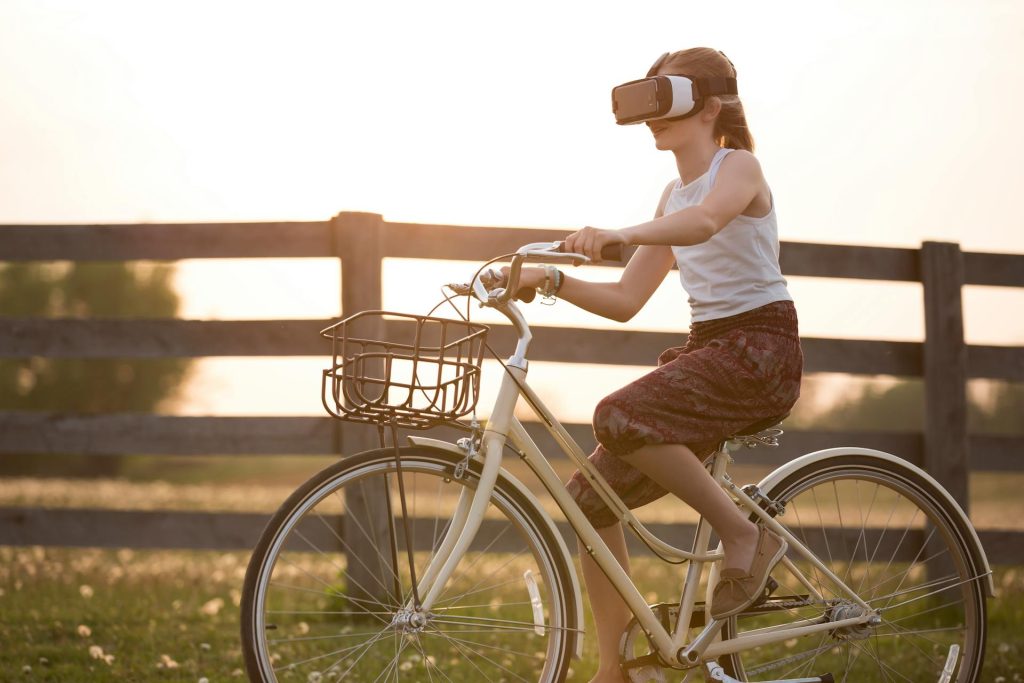
Augmented reality (AR) is one of the most intriguing and fastest-growing tech areas. The potential for augmented reality in business is vast, not just for tech startups. It brings new and innovative venture opportunities that could revolutionize how we do business and live our lives.
AR can be used in business in several ways; some have already been implemented, and others are just waiting to be discovered. To understand how augmented reality significantly impacts business, it is essential to know what this technology is and how it works.
What is augmented reality (AR)?
Augmented reality is one of the revolutionary future-changing technologies that combines computer-generated images, sounds, and other sensory stimuli with a person’s view of the real world. It can be used to add information to existing real-world objects and spaces or create an entirely new environment that blends computer graphics with the physical world.
The technology functions by enhancing one’s current perception of reality. As such, “augmented reality” typically refers to using computer vision and image processing on mobile devices or through glasses.
Why is augmented reality important for business?
Augmented reality is important for business because it allows you to interact with your customers in more personal and engaging ways. With augmented reality, you can give customers a view into your store or warehouse without them having to visit it—and this helps build trust between your brand and its customers. This means people will be more likely to purchase what they see as they can imagine using it in real life.
With the impact of AR on businesses growing steadily, how is it being used in business?
Retail
Retail is one of the largest industries that AR will transform. More and more stores are implementing AR into their products, and you can use it in many ways in your business.
In retail, augmented reality can help customers find products they’re looking for or in-store navigation. It can also be used to show the customer what their purchase looks like on them or how it would fit in their home or office. This helps customers see exactly what they’re getting before they buy something and is a great way to build trust between your brand and its customers.
This technology is also helpful for businesses because it allows them to provide customers with more information about their products without requiring additional manpower or resources.
Manufacturing
AR has many uses in manufacturing, from creating visual prototypes and simulations to improving the efficiency of assembly line processes.
The many uses of augmented reality in business include its application by engineers to see how their designs will appear once completed. Augmented reality enables manufacturers to create virtual simulations of real-world situations to test their equipment and processes in a safe environment. This allows them to test their ideas before spending time and money on building them.
Another use of AR in manufacturing is to enhance production processes. Manufacturing companies often use AR to streamline their production processes by providing real-time information about what’s happening on the factory floor. This helps them identify inefficiencies, which they can correct to improve their overall productivity and efficiency.
Marketing and advertising
In the case of marketing and advertising, augmented reality can be thought of as a way to create more personal experiences for consumers that allow them to interact with your brand in an immersive way.
Consumers can interact with AR-enabled advertisements in real-time, which helps them understand it better than they would by just looking at pictures or videos online. And with the rise of Web 3.0, technology like AR will only become more helpful in helping brands connect with consumers.
Training
Augmented reality is an innovative tool that can be used to train workers. It allows companies to create a virtual representation of the real world where workers can practice their skills before performing them in the real world.
Workers can wear special AR glasses that show them what their work area would look like if they were doing a particular task. This allows them to practice their skills without having to be at the location where they will be performing the task. They can also use augmented reality to show them how something works by having it appear on top of or around an object or person.
This type of training provides many benefits over traditional methods because it allows workers to improve their skills without needing a trainer.
Real Estate
Augmented reality (AR) can also enhance the experience of buying or renting a property. AR allows you to visualize your space before making any transactions and moving in, so it’s easier to picture how it would look with furniture and decorations.
These virtual tours make it easier for buyers and sellers to make informed decisions about purchasing or selling a property. In addition, AR can help real estate agents get better at their job by providing them with relevant information and tools that will make their work more efficient and convenient.
Final Thoughts
The uses for augmented reality in business are endless, and companies are just beginning to explore the potential of this technology. It will continue evolving and changing as more people use it and technology improves. This makes it essential for businesses to keep up with these changes to adapt to the needs of their customers, who are always looking for better and more convenient products and services.


